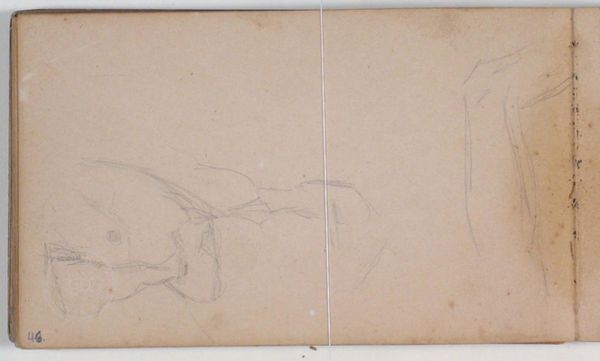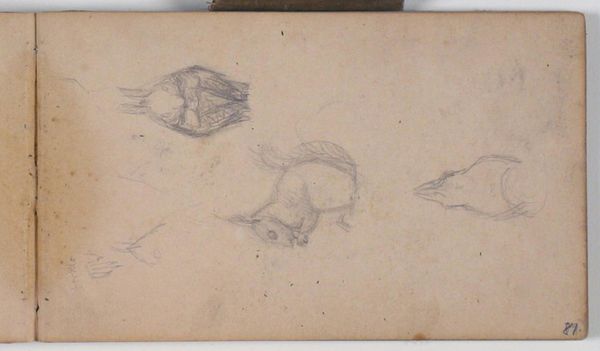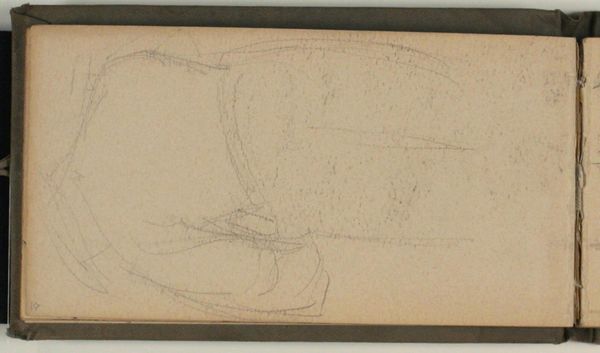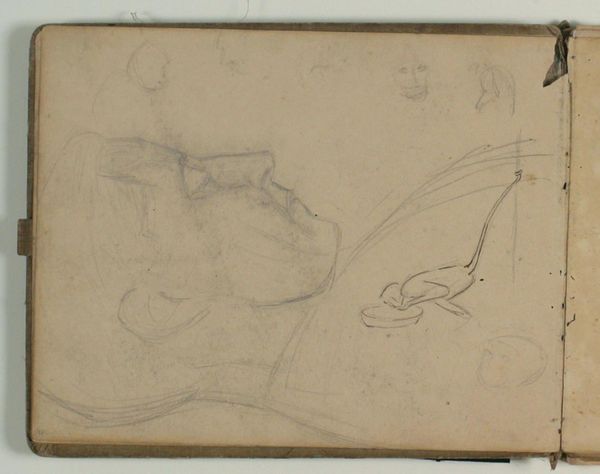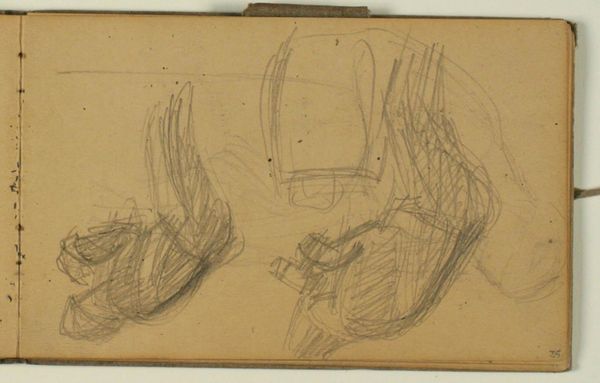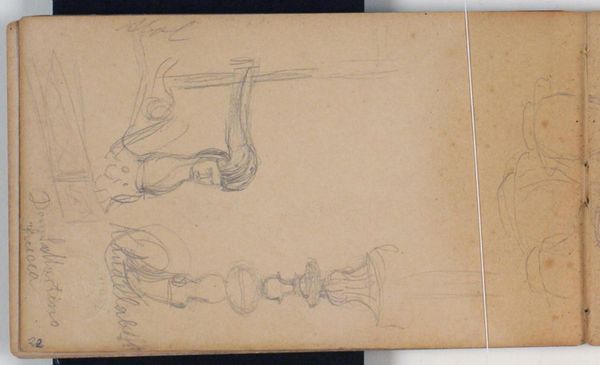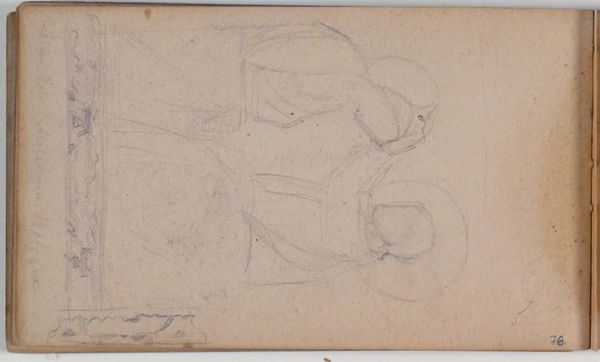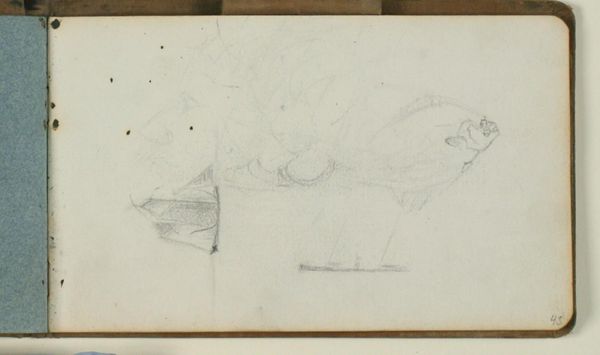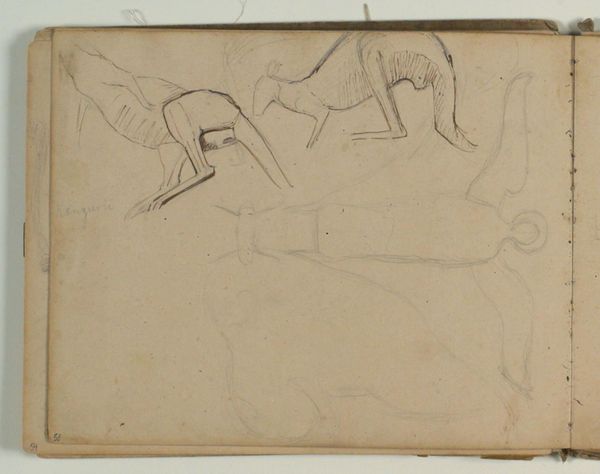
Dimensions: 101 mm (height) x 168 mm (width) (bladmaal)
Curator: I'm immediately struck by the simplicity of this sketch. There's a certain rawness, almost like glimpsing a private thought. Editor: Indeed. What we have here is Niels Larsen Stevns' "Siddende gruppe under træer", dating from 1896. It's a pencil drawing held in the collection of the SMK, Statens Museum for Kunst. Curator: The starkness of the pencil on paper throws the forms into high relief; this wasn't made for show but seems almost anthropological, catching a specific moment with precision. I wonder about the socio-economic status of these figures – there's something about their posture that hints at weariness and everyday labor. Editor: Precisely! Stevns was painting at a time of great social upheaval. His focus on capturing scenes of everyday life was a way of participating in a larger cultural project—a growing interest in Realism throughout Europe. You know, the drawing being part of the National Gallery suggests this ordinary subject matter entered high art spaces through patronage or artistic choice. Curator: It's a poignant slice of life. What was the purpose, its context, and to whom was he catering? The swift, suggestive marks convey a great deal of information, economical strokes mapping out volumes and suggesting textures with surprising clarity. What brand pencil? Where did Stevns purchase it and who made the paper he was drawing on? Was it considered disposable at the time, or treasured and scarce? Editor: Interesting questions, certainly indicative of your materialistic perspective, it serves as a documentary testament to the evolving public image in art! This drawing entered museum collections— legitimising Stevns’ vision, but also influencing public taste in what kind of “danishness” should be celebrated or displayed. It invites one to ask what national narratives were being actively formed then, at the museum, and by this sketch today? Curator: These faint pencil strokes also capture a significant cultural shift; from this ephemeral image that was produced, a historical movement emerged and the labour in manufacturing such drawings may now serve as archival resources themselves. It’s the tangible remnants of the material conditions shaping visual expression at the time. Editor: Indeed, the quiet study of this simple image provides much to contemplate about the times, in the halls, and the role that it occupies as a preserver.
Comments
No comments
Be the first to comment and join the conversation on the ultimate creative platform.
